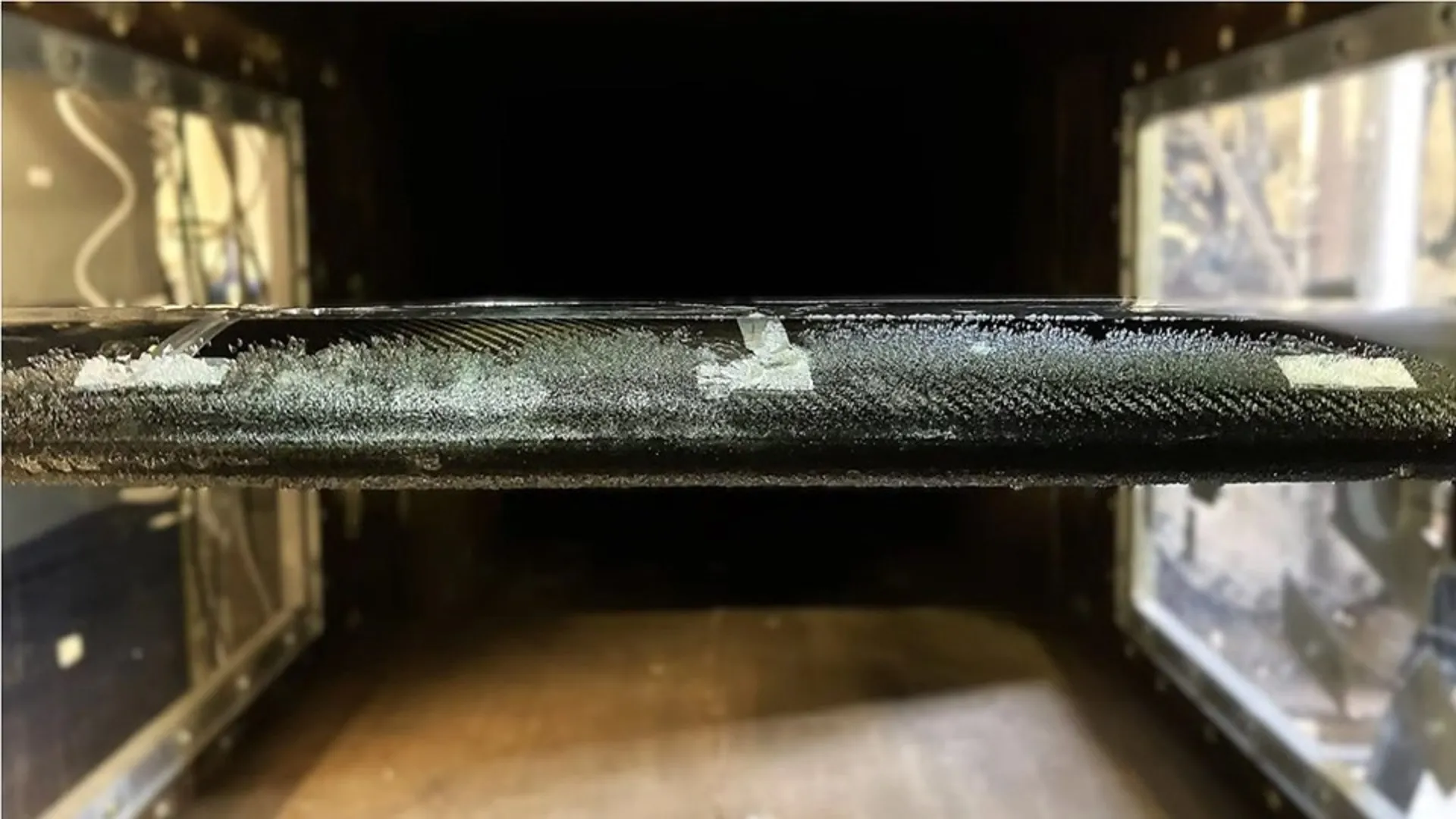Copyright Interesting Engineering

Scientists in Germany have developed a new system that removes ice from aircraft wings far more efficiently than conventional methods by causing icy spots to vibrate until they detach, thereby significantly reducing the energy required for the process. To develop the novel energy-conserving deicing method, the Fraunhofer Institute for Structural Durability and System Reliability LBF teamed up with their partners from the EU’s Clean Aviation program, including aircraft manufacturer Airbus and aerospace company Parker-Meggitt. The innovative technology could cut deicing energy consumption by up to 80 percent. This represents strong progress for sustainable aviation as electric and hybrid aircraft become increasingly common. “Our method holds out the prospect of cutting energy consumption by up to 80 percent, making it an important contribution to sustainable aviation,” Denis Becker, PhD, a researcher at Fraunhofer LBF’s Experimental Analysis and Electromechanics department, said. Ice removal made easy Ice formation on aircraft wings is a serious safety risk, as it reduces lift, increases drag, and can impair control surfaces such as rudders and ailerons. In extreme cases, it can cause an aircraft to stall. Conventional deicing systems address the problem by redirecting hot air from engines across the wings. While effective, this method is energy-intensive and incompatible with low-emission propulsion systems that lack waste heat. Now, instead of melting the ice, the new solution makes it crack and flake off. Sensors first detect ice formation on specific sections of the wing, after which piezoelectric actuators are activated to generate low-frequency vibrations. These actuators then generate low-frequency vibrations precisely targeted at the frozen areas. “The vibrations are in the range of just a few kilohertz,” Becker disclosed. These micro-vibrations cause the ice to crack and flake away, all without heating the surface. “They are invisible to the naked eye but very effective,” Becker stated. “The ice clinging to the wing breaks up and falls off.” Wing vibration frequency The secret behind the system’s efficiency lies in identifying the wing’s natural resonance frequency, which shifts constantly in response to changes in speed, altitude, temperature, humidity, and ice thickness. Because external conditions constantly change during flight, the wing’s resonance frequency also shifts. To adapt, the sensors continuously provide updated metrics. “Algorithms use that information to calculate the natural resonant frequency,” Becker continued. The team tested their concept in an icing wind tunnel, where realistic ice deposits were formed on a wing section. The results confirmed that the vibration-based deicing system works reliably and requires only a fraction of the energy used by traditional thermal systems. “Our experiments in the icing wind tunnel showed that electromechanical deicing works,” Becker pointed out. “As the next step, we will be conducting further tests in the wind tunnel to get the system ready for in-flight testing.” The researcher hopes that the system’s simple setup, which consists of a power supply, sensors, and a cooling unit, could be adapted for use in smaller aircraft and even deployed in crisis zones where complex infrastructure is unavailable. The system arrives at a crucial moment for aviation, which faces significant challenges as energy use and carbon emissions must decline sharply in the coming years. “But the propulsion systems of the future will no longer produce any hot exhaust gas or waste heat, which thermomechanical deicing systems require to do their job,” Becker concluded in a press release.



